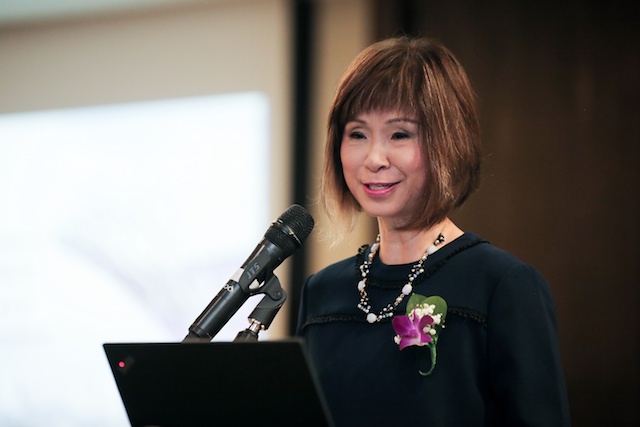“Bouncing forward” from adversity
Recent CARE conference explores ways of defining, measuring and developing interventions for resilience in older ages.
BY: Eleanor Yap
Depression and stress are at the highest particularly during midlife, those who are 50 to 59 years old. In the US, there is recent evidence that suicide rates among the middle aged are increasing. Resilience is therefore critical to protect against the demands of midlife. This topic was the focus of a conference on ageing and resilience in the 21st century organised by the Centre for Ageing Research & Education (CARE) at Duke-NUS Medical School under the aegis of the Association of Pacific Rim Universities (APRU).
Dr Amy Khor, Senior Minister of State for Health & Environment and Water Resources and guest-of-honour, shared at the opening ceremony of the conference: “Building resilience is central to ageing well.” She shared that we need to build resilience at three levels. First, we need to help seniors strengthen their ability to cope with challenges that come with ageing, physically and emotionally.
She added that as we age, we inevitably encounter failure, loss and illness. These could be the development of a chronic illness, the onset of disability, a transformation in one’s lifestyle due to retirement, the loss of a steady income, loneliness due to children moving away for education or employment, the passing away of a loved one or friends. “It is how we respond to these life events that defines our ensuing quality of life,” said Dr Khor.
Her second point is the need to strengthen resilience at the family level. “Ageing does not only involve individuals, it involves families. As our society grows older and family sizes shrink due to lower fertility and increasing rates of non-marriage, we need to think about ways to support family caregivers who are often relatively old,” she said.
Recent CARE research shows that older caregivers, 55 years and older, are more likely to have at least one chronic disease, mobility limitations, and a higher number of depressive symptoms compared to younger caregivers. In addition, caregivers in their 80s and 90s were found to be providing an average of about 50 hours of care per week. Dr Khor shared, “In order to better help our caregivers cope, especially older caregivers, we need to look into ways to bring care for our seniors closer to homes.”
Finally, her third point is the need to work on strengthening resilience at the community and society’s level, in order to better meet the challenges of an ageing population. “As families shrink, we need to strengthen community support for our seniors, to complement the role of families.” Research from CARE has shown that having larger social networks is correlated with better perceived health and fewer depressive symptoms among older adults with the same number of chronic diseases.
Dr Khor said, “Larger social networks can help to buffer stressful situations and enable seniors to better reach out for physical help or emotional support. Strong and effective support networks can also lead to optimism in individuals as well as provide a source of social activity which can help improve health.”
Resilience can be developed
A speaker at the conference, Prof Barbara Resnick, Department of Organizational Systems and Adult Health, University of Maryland School of Nursing, US, shared through a telecast presentation: “Resilience can change over time. One can develop resilience. It combines personality and lived experiences.” She added that resilience is about accepting one’s new reality and trying to put together something that is good, a “bouncing forward” effect as she called it.
In her talk, she shared about psychosocial and physical resilience. “Psychosocial resilience is focused on being able to maintain a positive affect regardless, such as being an optimistic person. Physical resilience is the ability to recover or optimise function in the face of age-related losses or disease. Physical resilience results in perseverance and determination to overcome physical challenges encountered by a physically stressful event such as a hip fracture.” She shared that exercise and going to support groups are some examples of behaviours of resilience.
Knowing how to be resilient is key, keeping in mind that longitudinal work shows Singaporeans are living longer, but with more years spent disabled. Assoc Prof Angelique Chan, executive director of CARE, said that today, an older Singaporean woman at 60 can expect to live 70 percent of her remaining years (26) without disability, while an older Singaporean man at 60 can expect to live 88 percent of his remaining years (22) without disability.
Policy briefs launched
During the conference, CARE also launched Series 2 and 3 of its Research/Policy Brief Series, which details key research findings for use in policy and planning recommendations. Series 2 focuses on the predictors of falls among older Singaporeans, while Series 3 focuses on the plight of caregivers of the elderly in Singapore who are not only older themselves but providing long hours of care.



0 Comments